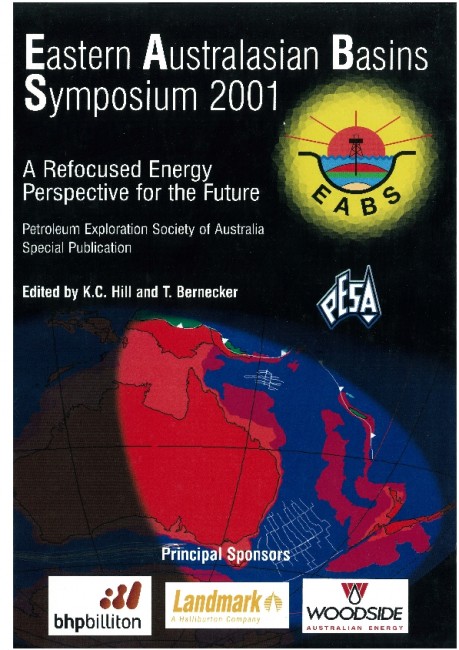Publication Name: Eastern Australian Basins Symposium 2001
Authors: I.R. Duddy and B. Erout
Date Published: November 2001
Number of Pages: 36
Reference Type: Magazine Article
Abstract:
Commercial hydrocarbon discoveries in the Otway Basin are currently limited to the Victorian Port Campbell Embayment, both onshore and offshore and the onshore Penola Trough in South Australia. Previous AFTA -based studies have shown that the regional thermal history is a key factor controlling the distribution of these discoveries, the results of these studies providing a viable means of focussing exploration in the 'thermally' most favourable regions of the basin. In simple terms, thermally favourable regions are those in which the negative effects of elevated mid-Cretaceous heat-flow have been overcome by sufficiently thick Late Cretaceous and Tertiary burial to re-start hydrocarbon generation from Early Cretaceous source rocks.The offshore Port Campbell Embayment is such a favourable region but local structural complexity in this elatively small area provides significant challenges for predicting the location of additional hydrocarbon accumulations. Available open file organic maturity information from offshore wells (vitrinite reflectance, spore colour (TAl), T maxl suggests kilometre-scale uplift and erosion events in the area, but the timing of these events is very poorly constrained by the current data distribution. Similarly, seismic sections clearly show a number of post-Early Cretaceous structuring episodes, but even the relative importance of these episodes on the generation and preservation of hydrocarbons is unconstrained.
In this study, Temispack 2-D basin modelling results are presented for a section through the La Bella and Minerva gas discoveries along seismic line OE80A-1056. A key aspect of this study is to provide viable explanations for the presence of gas accumulations at La Bella and Minerva as a guide to understanding the factors that control the
petroleum system in the area.
Thermal history reconstruction using a combination of AFrA, VR and TAl data from Mussel-l, Minerva-1, Conan-1 and La Belia-l provides evidence for a major period of post-Campanian - pre Miocene structuring on the Mussel Platform. A large area of the Mussel Platform is interpreted to have been buried by an additional -1.5 km of Late
Cretaceous and Paleocene section prior to inversion at -60 Ma related to transpressional interaction between the Australian and Antarctic plates.
The calibrated 2-D model successfully predicts accumulations at Minerva and La Bella charged by hydrocarbons generated from the upper part of the Eumeralla Formation during the Tertiary and fault migrated. Minerva is locally sourced from the Shipwreck Trough whereas La Bella is sourced from the adjacent Voluta Trough. The model also predicts that all valid Waane Formation traps in the zone of tilted fault blocks on the southern flank of the Mussel Platform flanking the Vol uta Trough could potentially contain accumulations by fault migration pathways.


